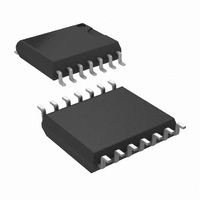LM10CWMX/NOPB National Semiconductor, LM10CWMX/NOPB Datasheet - Page 4

LM10CWMX/NOPB
Manufacturer Part Number
LM10CWMX/NOPB
Description
IC OP AMP & VOLT REF 14-SOIC
Manufacturer
National Semiconductor
Datasheet
1.LM10CWMNOPB.pdf
(25 pages)
Specifications of LM10CWMX/NOPB
Amplifier Type
General Purpose
Number Of Circuits
1
Current - Input Bias
12nA
Voltage - Input Offset
500µV
Current - Supply
300µA
Current - Output / Channel
20mA
Voltage - Supply, Single/dual (±)
1.1 V ~ 40 V, ±0.55 V ~ 20 V
Operating Temperature
0°C ~ 70°C
Mounting Type
Surface Mount
Package / Case
14-SOIC (7.5mm Width)
Lead Free Status / RoHS Status
Lead free / RoHS Compliant
Output Type
-
-3db Bandwidth
-
Slew Rate
-
Gain Bandwidth Product
-
Other names
*LM10CWMX
*LM10CWMX/NOPB
LM10CWMX
*LM10CWMX/NOPB
LM10CWMX
Available stocks
Company
Part Number
Manufacturer
Quantity
Price
Company:
Part Number:
LM10CWMX/NOPB
Manufacturer:
2002+
Quantity:
6 221
Part Number:
LM10CWMX/NOPB
Manufacturer:
NS/国半
Quantity:
20 000
www.national.com
Load regulation
Amplifier gain
Feedback sense voltage
Feedback current
Reference drift
Supply current
Electrical Characteristics
T
Note 1: Absolute Maximum Ratings indicate limits beyond which damage to the device may occur. Operating Ratings indicate conditions for which the device is
functional, but do not guarantee specific performance limits.
Note 2: The Input voltage can exceed the supply voltages provided that the voltage from the input to any other terminal does not exceed the maximum differential
input voltage and excess dissipation is accounted for when V
Note 3: The maximum, operating-junction temperature is 150˚C for the LM10, 100˚C for the LM10B(L) and 85˚C for the LM10C(L). At elevated temperatures,
devices must be derated based on package thermal resistance.
Note 4: Internal thermal limiting prevents excessive heating that could result in sudden failure, but the IC can be subjected to accelerated stress with a shorted
output and worst-case conditions.
Note 5: These specifications apply for V
for the standard part and 6.5V for the low voltage part. Normal typeface indicates 25˚C limits. Boldface type indicates limits and altered test conditions for
full-temperature-range operation; this is −55˚C to 125˚C for the LM10, −25˚C to 85˚C for the LM10B(L) and 0˚C to 70˚C for the LM10C(L). The specifications do
not include the effects of thermal gradients (τ
(see curves).
Note 6: For T
Note 7: This defines operation in floating applications such as the bootstrapped regulator or two-wire transmitter. Output is connected to the V
and input common mode is referred to V
the positive-supply rejection error.
Note 8: Refer to RETS10X for LM10H military specifications.
Definition of Terms
Input offset voltage: That voltage which must be applied between the input terminals to bias the unloaded output in the linear
region.
Input offset current: The difference in the currents at the input terminals when the unloaded output is in the linear region.
Input bias current: The absolute value of the average of the two input currents.
Input resistance: The ratio of the change in input voltage to the change in input current on either input with the other grounded.
Large signal voltage gain: The ratio of the specified output voltage swing to the change in differential input voltage required to
produce it.
Shunt gain: The ratio of the specified output voltage swing to the change in differential input voltage required to produce it with
the output tied to the V
common-mode is referred to the V
Common-mode rejection: The ratio of the input voltage range to the change in offset voltage between the extremes.
Supply-voltage rejection: The ratio of the specified supply-voltage change to the change in offset voltage between the
extremes.
Line regulation: The average change in reference output voltage over the specified supply voltage range.
Load regulation: The change in reference output voltage from no load to that load specified.
Feedback sense voltage: The voltage, referred to V
Reference amplifier gain: The ratio of the specified reference output change to the change in feedback sense voltage required
to produce it.
Feedback current: The absolute value of the current at the feedback terminal when operating in regulation.
Supply current: The current required from the power source to operate the amplifier and reference with their outputs unloaded
and operating in the linear range.
J
=25˚C, T
Parameter
MIN
J
>
90˚C, I
≤T
J
≤T
OS
MAX
may exceed 1.5 nA for V
+
terminal of the IC. The load and power source are connected between the V
(Boldface type refers to limits over temperature range) (Note 5)
0≤I
V
0.2V≤V
+
−V
REF
−
REF
−
(see typical applications). Effect of larger output-voltage swings with higher load resistance can be accounted for by adding
≤0.5 mA
≤V
REF
≥1.0V (1.1V)
−
CM
1
.20 ms), die heating (τ
terminal.
≤5.5V
≤V
Conditions
+
−0.85V (1.0V), 1.2V (1.3V)
CM
=V
(Continued)
−
. With T
IN
<
V
−
J
.
=125˚C and V
−
, on the reference feedback terminal while operating in regulation.
2
.0.2s) or package heating. Gradient effects are small and tend to offset the electrical error
<
V
4
S
−
≤V
Min
195
194
≤V
30
20
MAX
CM
≤V
, V
−
REF
LM10BL
+0.1V, I
0.002
0.01
Typ
200
260
70
20
=0.2V and 0≤I
OS
≤5 nA.
Max
0.15
205
206
400
500
0.1
50
65
REF
≤1.0 mA, unless otherwise specified: V
Min
190
189
20
15
+
and V
LM10CL
0.003
0.01
Typ
200
280
70
22
−
terminals, and input
+
Max
0.15
210
211
500
570
0.2
terminal of the IC
75
90
MAX
Units
V/mV
V/mV
%/˚C
=40V
mV
mV
nA
nA
µA
µA
%
%














